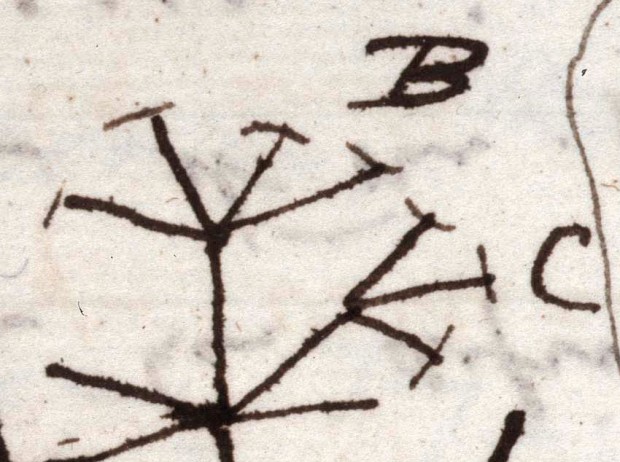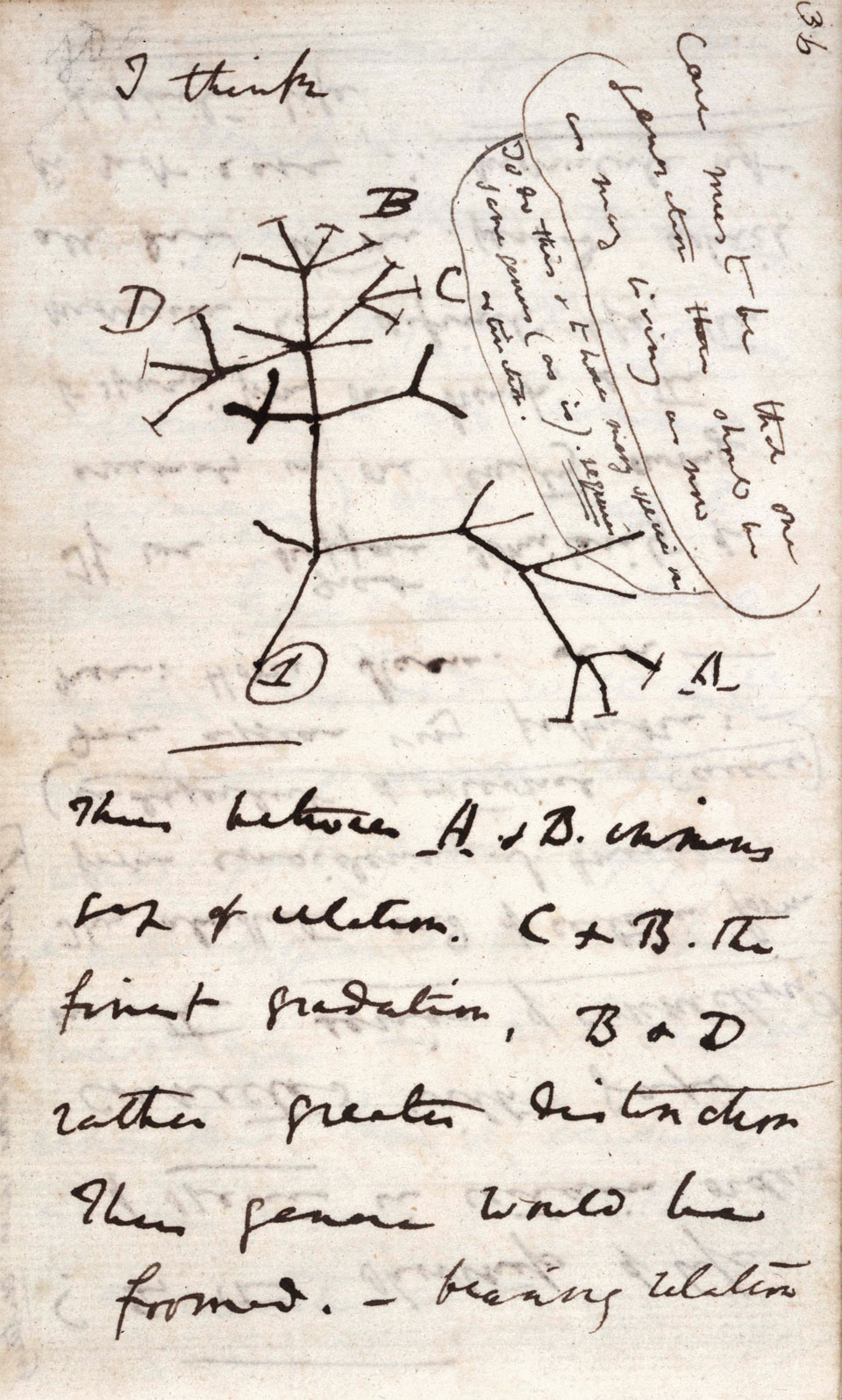What’s This? No. 24
 Well, okay, you can probably tell that my latest What’s This? nature challenge is atypical — neither fur nor feather, fern nor fritillary. Or is it?
Well, okay, you can probably tell that my latest What’s This? nature challenge is atypical — neither fur nor feather, fern nor fritillary. Or is it?
Perhaps we have a neural pathway here or maybe a remarkable, coincidental pattern on the wing of a butterfly.
In any event, name it and be eligible to win $5 off any of my nature outings or workshops. I’ll draw a winner at random — and will publish all your correct answers — on Thursday.
Enter in the comments section below.
 Added February 12, 2015: We have a winner. Well, we’re all winners today: Charles Darwin’s Birthday. But Elizabeth Jaffe was selected at random among those of you who correctly identified this as the evolutionary tree that Darwin sketched in one of his notebooks.
Added February 12, 2015: We have a winner. Well, we’re all winners today: Charles Darwin’s Birthday. But Elizabeth Jaffe was selected at random among those of you who correctly identified this as the evolutionary tree that Darwin sketched in one of his notebooks.
Among the correct answers listed in the comments below are the customary whimsical and creative replies — this time from Sara Backer, Brian Willson and Ricka M.
Charles Darwin’s law of evolution is a gift for the ages — a foundation and a perspective to help us understand nothing less than life on Earth: from where we all came and how we relate to everthing else alive (or even extinct).
Unlike most other branches of science, which tend to experiment with the empirical, or what’s in front of us now, Darwinism enables us to look backward through time, to map a journey of events — survival and extinction, mostly — that took place over the course of this planet’s existence. Darwin brought science to history and history to science.
That would have been enough. But following Darwinism’s illuminated path was a new branch of philosophy. It espoused that the condition of life on Earth could be explained through the lens of evolution. Supernaturalism, the essentialism of Plato, the creationism of religion, became unnecessary to explain how and why we’re here. The evolutionary biologist Ernst Mayr described all this beautifully in a speech and later in an essay on Darwin’s philosophy of science. Determinism is repudiated, he said, which places our fate nowhere else but in our own evolved hands.
“To borrow Darwin’s phase, there is grandeur in this view of life,” Mayr said. “New modes of thinking have been, and are being, evolved. Almost every component in modern man’s belief system is somehow affected by Darwinian principles.”
In 1837, 22 years before he published On the Origin of Species, Darwin drew in one of his notebooks a simple diagram: the shape of a tree with forked branches, with the most ancient forms at its base and descendents branching in various ways. This was Darwin’s draft roadmap to how life on the planet, at any point through history, could be described as descending from a single common ancestor. Brilliance in a sketch.
And above all on the drawing, Darwin wrote the words: “I think.”
— — —
Find all my What’s This? challenges (with answers) here.
If you like what you’re seeing on the blog, sign up for my occasional newsletter, Natural Selections, which bring you freshly picked news from the frontiers of wildlife science and from my own adventures with wildlife in wild places.
— — —


This is the “I think” page of Chuck D’s notebook! I love that sketch–a mind in action…
That’s great! I have to tell you, I might not have known the answer if this were not my daughter’s tattoo (the tree without the letters).
-awesome in the true sense of the word
Looks very similar to a site diagram for a public camping area. (Go to area A, first lean-to on your left.) Or a map of an underground system of prairie dog burrows? (Adapted to follow human campgrounds as sources of food?)
A rare find! These are diseased droppings from a plum tree infected with an unusual variant of black rot informally called alphabet rot. Afflicted twigs curl into the shapes of letters or numbers, leaving mystic messages in the snow that are actually random. The other possibility is that it’s a man-made map indicating sections B and C where competing snow camping family reunions have pitched their tents. It is important that B family members do not camp in the C section. Lives depend on it.
Darwin evolutionary tree drawing
Looks like Charles Darwin’s sketch on speciation (evolution).
Man, it would be embarrassing if I got this one (Darwin’s phylogenetic tree) wrong 🙂 How’d you get a photo?!!
That’s part of Darwin’s drawing, his little sketch of an evolutionary tree. It’s interesting he didn’t usually think this way (visually). I think this is his only known drawing.
I know what it is: Darwin’s Original Phylogenetic Tree (tree of life). I’ll pay the extra five bucks. Make someone else a winner.
As a type designer, I happen to know this one: it’s an extreme close-up of the wing of Vanessa alphabetica.
It is obviously the family tree, or phylogenetic chart of your family, following the paternal links.